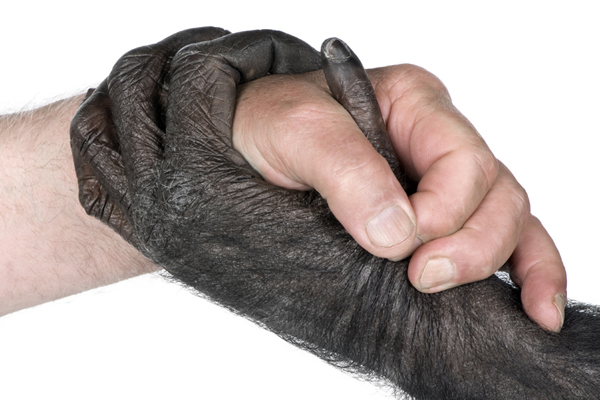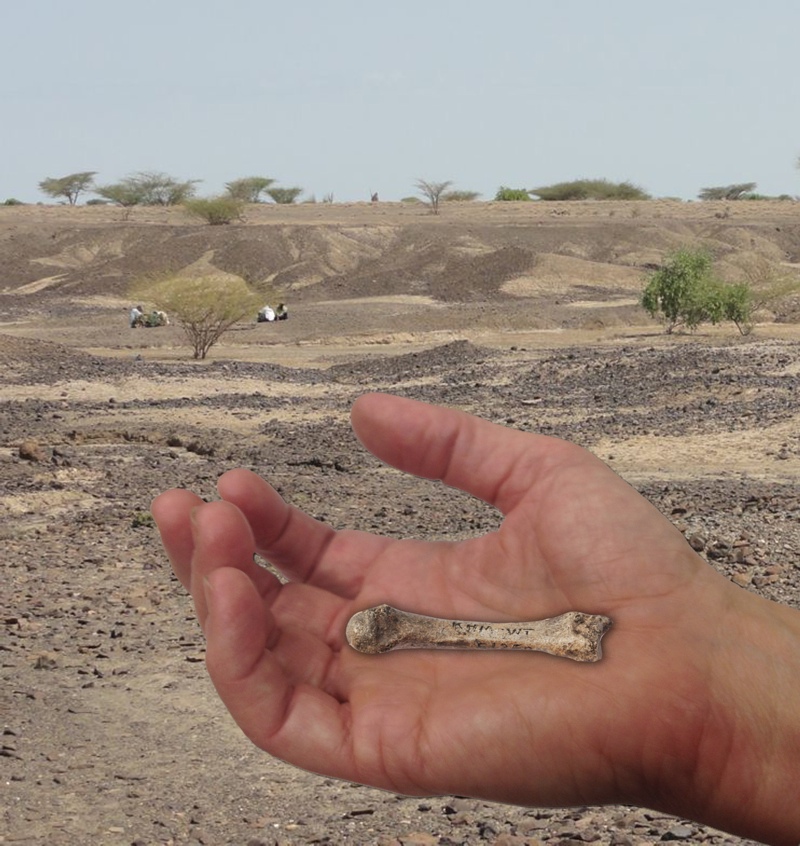Human Hands Are Primitive, New Study Finds

Human hands may be more primitive than those of chimpanzees, more closely resembling the hands of the last common ancestor of humans and chimps, researchers say.
These results suggest that since the overall hand proportions of humans are largely primitive, when the first members of the human lineage started to use and produce complex stone tools in a systematic way, "their hands were already pretty much like ours today," said study lead author Sergio Almécija, a paleoanthropologist at George Washington University in Washington, D.C.
A key trait that distinguishes humans from all other species alive today is the capability to make and use complex tools. This ability depends not only on the extraordinarily powerful human brain, but also the dexterity of the human hand. [See Photos of Our Closest Human Ancestor]
Human hands are distinguished from those of apes by thumbs that are relatively long compared with the rest of the fingers. A century ago, researchers suggested the ancestors of humans diverged very early on from the ancestors of apes such as chimps and gorillas, and that the hands of the human lineage were relatively primitive, resembling those of some monkeys today. In contrast, scientists thought modern apes possessed extremely specialized hands adapted for a life suspended from branches.
However, during the 1980s and 1990s, genetic analyses unexpectedly revealed that humanity's closest living relatives were chimpanzees. "That was very surprising, because the idea at the time was that gorillas and chimpanzees were more closely related to each other than any of them to humans," Almécija told Live Science.
This discovery led many researchers to assume that the last common ancestor shared by humans and chimps about 6 million to 7 million years ago was similar to a modern chimpanzee, and that this chimplike ancestor walked on its knuckles. This suggested the human hand evolved only after the ancestors of humans and chimpanzees diverged, with the hands of the human lineage changing to make use of tools after the ancestors of humans evolved to stand on two legs.
But in the past decade or so, fossil discoveries have revealed that a number of features of the human hand may be very primitive in nature, as was suggested before genetic analyses. For example, in January, scientists found that the ancestors of humans may have evolved humanlike hands that were precise and powerful enough to use stone tools more than a half-million years before such tools were even developed.
Get the world’s most fascinating discoveries delivered straight to your inbox.
To help resolve this controversy, scientists measured the hand proportions of humans, living and fossil apes, and fossils of ancient relatives of humanity such as 4.4-million-year-old Ardipithecus ramidus and 2-million-year-old Australopithecus sediba. They used this data to build evolutionary models of how hands changed over time.
The scientists found that the strongest evolutionary scenario showed that human and gorilla hands changed less than those of chimpanzees and orangutans. "During the last 6 million years, chimpanzees have evolved, too," Almécija said.
This model suggests the fingers of chimps, orangutans and gibbons lengthened over time independently from each other. These changes may be adaptations for a life spent in the trees suspended from branches.
These findings suggest that scenarios of human evolution that rely on a chimplike last common ancestor "might be flawed from the beginning," Almécija said. Although modern chimpanzees might paint an accurate picture of what some anatomical regions of the last common ancestor were like, this does not prove true for the whole organism, he said.
"I would like to stress that this does not mean that the last common ancestor was producing stone tool artifacts, or that the human hands haven't changed at all," Almécija said.
Almécija and colleagues Jeroen Smaers and William Jungers detailed their findings online today (July 14) in the journal Nature Communications.
Follow Live Science @livescience, Facebook & Google+. Original article on Live Science.


